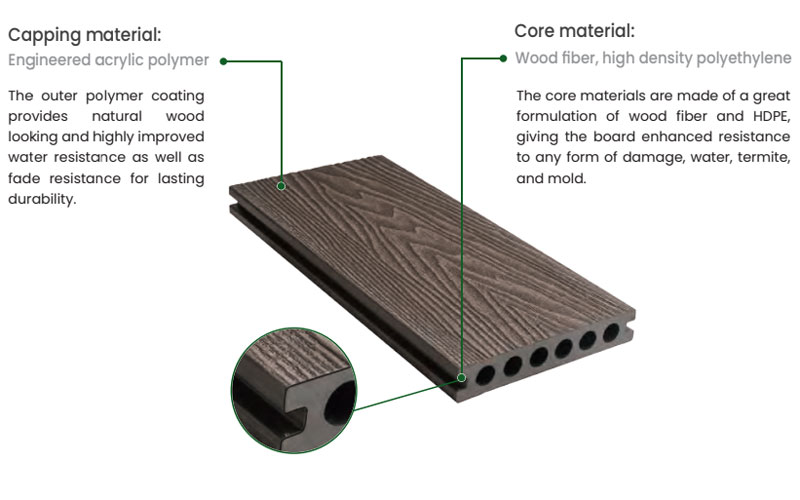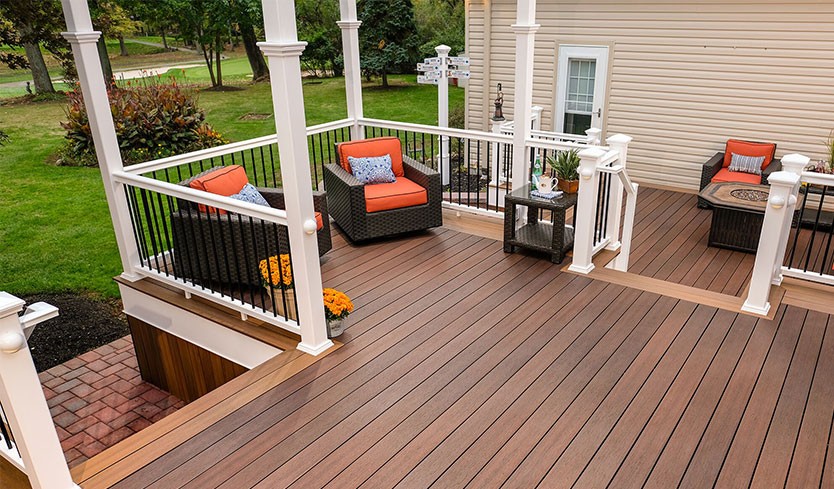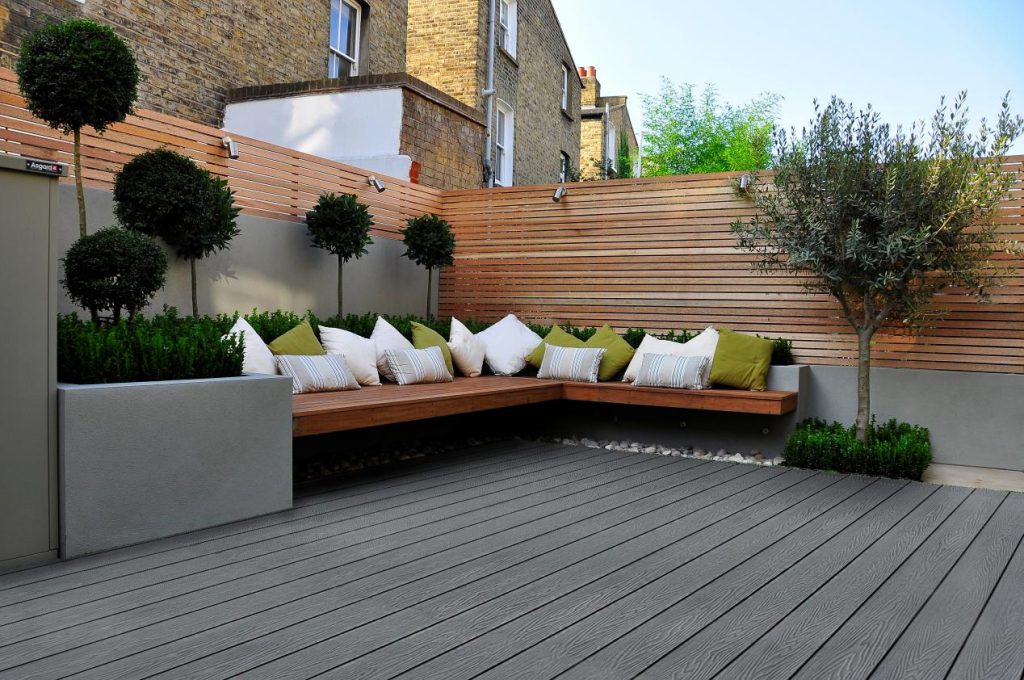Outdoor decking has evolved far beyond traditional timber. Today, homeowners and designers are turning to advanced composite materials that deliver both beauty and endurance. Among these, UltraShield Antique Composite Decking and 3D Embossed WPC Decking (Hosung) are two leading options that stand out for their innovation and performance. While both materials combine wood and polymer technology, they are crafted differently, offering distinct advantages in texture, color depth, longevity, and maintenance. This detailed comparison will guide you through their differences—helping you choose the right material for your outdoor sanctuary.
Table of Contents
What Is UltraShield Antique Composite Decking?
UltraShield Antique Composite Decking belongs to a new generation of capped composites that merge natural wood beauty with modern polymer protection. The “Antique” series emphasizes rich, multi-tonal colors and realistic wood textures, often inspired by aged hardwoods such as walnut, teak, or oak.
Each board features a core made from recycled wood fibers and HDPE (high-density polyethylene), surrounded by a 360-degree protective shell. This cap seals out moisture and stains, ensuring the board retains its deep antique hue and texture for decades.
Unlike ordinary composites, UltraShield Antique decking has color variation and surface detailing that closely mimic hand-scraped wood—making it one of the most elegant options for outdoor design.

What Is 3D Embossed WPC Decking (Hosung)?
Hosung’s 3D Embossed WPC Decking represents a refined version of traditional wood-plastic composite. It is composed of wood fiber, recycled plastic, and eco-friendly additives, blended and extruded into a dense, stable board.
What makes it unique is the 3D embossing process—a high-pressure surface treatment that etches realistic wood grain patterns deep into the surface. The result is a natural-looking texture that offers visual depth and tactile authenticity, without sacrificing structural strength.
Unlike capped boards, Hosung’s 3D embossed decking has a solid, homogeneous structure throughout, which means there’s no separate outer shell. This uniformity prevents delamination and maintains consistent color and performance even if the surface is scratched.
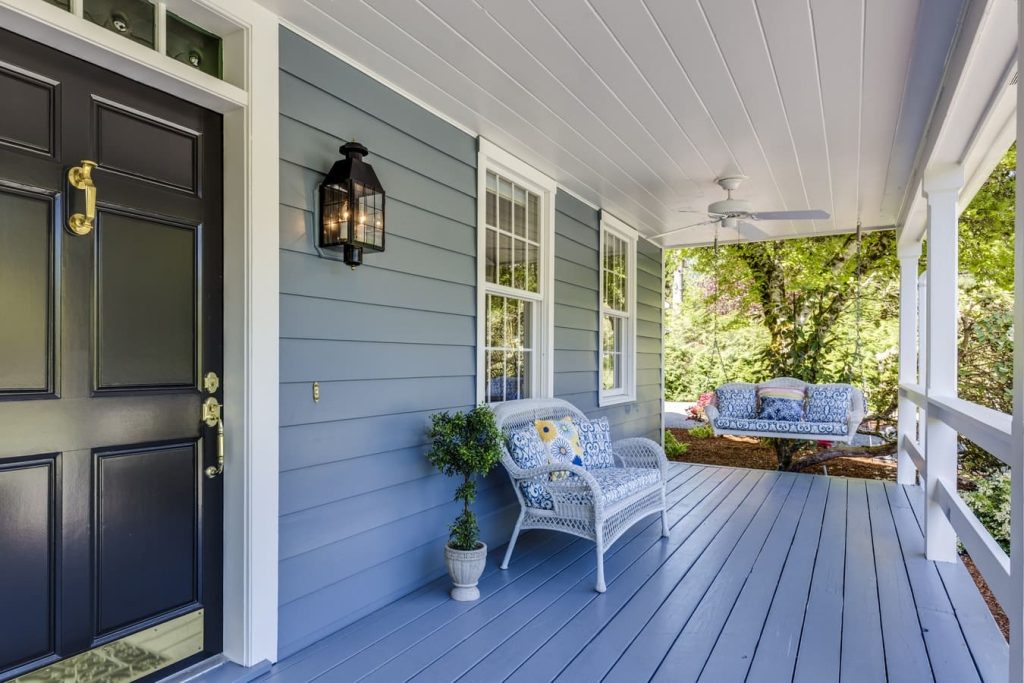
Design and Visual Appeal
UltraShield Antique Composite Decking: The Beauty of Aged Wood
One of the biggest attractions of UltraShield Antique Composite Decking is its color richness. Each board features multiple tonal layers, giving the appearance of naturally weathered hardwood. From golden browns to deep chocolate tones, the antique series replicates the warmth and character of time-aged timber.
The co-extruded cap allows precise color blending, creating depth that resembles genuine wood grain. The surface is finely textured—neither too glossy nor too rough—striking a balance between elegance and realism.
For homeowners seeking a timeless, luxurious aesthetic, UltraShield Antique decking delivers the perfect fusion of classic beauty and advanced performance.
3D Embossed WPC Decking (Hosung): Natural Texture You Can Feel
Hosung’s 3D embossed WPC decking appeals to those who appreciate tactile authenticity. Each board’s deep grain embossing captures the uneven, organic lines of real wood. The texture not only enhances appearance but also improves grip and comfort, especially for barefoot walking around pools or patios.
The color options are typically more natural and matte, favoring earthy shades like cedar, ash, and mahogany. Instead of artificial uniformity, Hosung’s embossed boards celebrate organic irregularity, creating a natural feel that blends seamlessly into gardens and outdoor retreats.
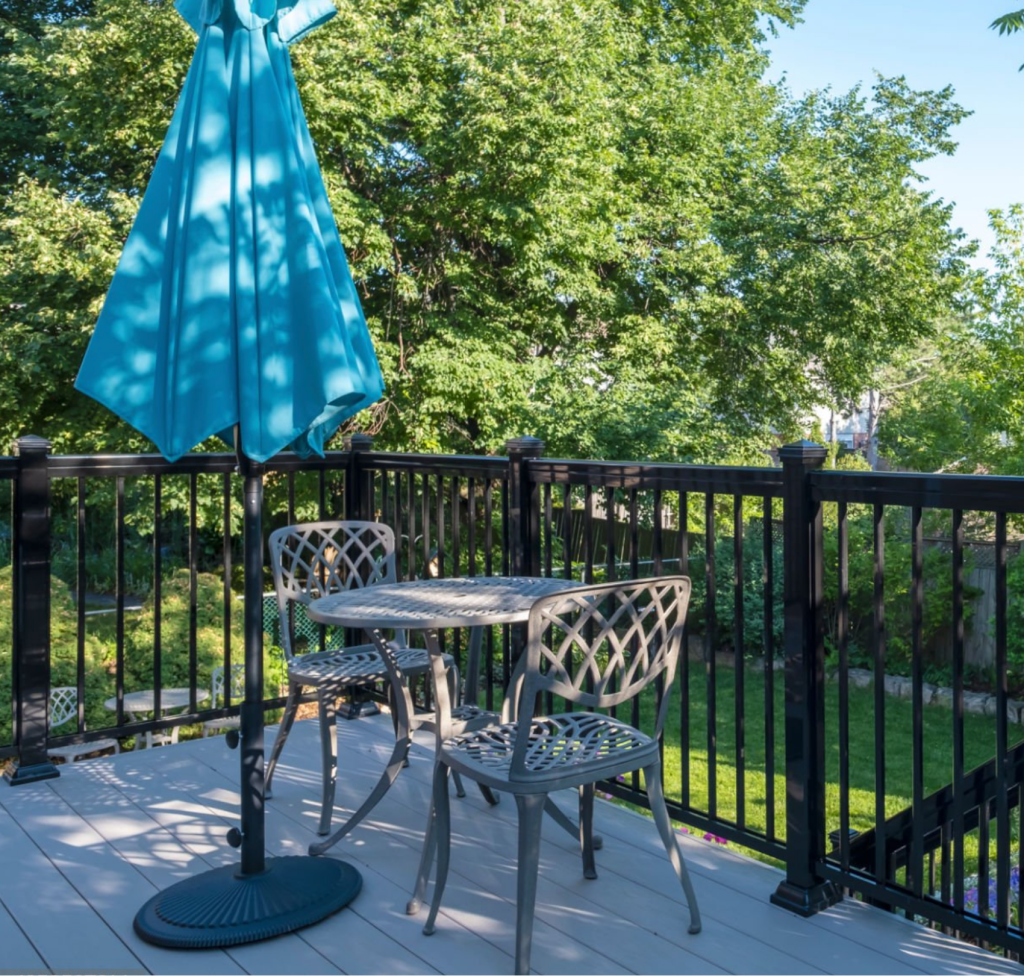
Structural Differences
UltraShield Antique: Multi-Layer Protection
UltraShield Antique boards feature a dual-layer design:
Inner core: A dense composite of recycled wood fiber and HDPE, offering structural stability.
Outer shell: A fully encapsulating polymer layer that resists UV rays, stains, and water absorption.
This “capped” technology is key to its long lifespan. The protective layer shields the core from expansion, fading, or rot, making the decking nearly impervious to weathering.
3D Embossed WPC: Solid Core Durability
Hosung’s 3D embossed boards use a single-layer solid composite. Instead of relying on an external cap, the entire board is engineered for strength and resilience. Its dense composition minimizes cracking or splintering, while internal stabilizers prevent warping under temperature fluctuations.
Although it lacks a separate cap, the embossed surface undergoes UV-resistant treatment to slow fading and preserve color uniformity.
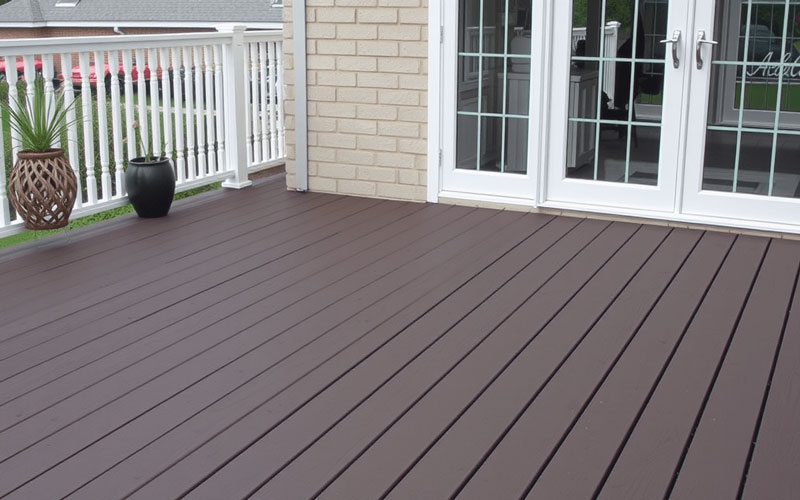
Surface Performance
Scratch and Stain Resistance
The polymer cap of UltraShield Antique Composite Decking provides superior resistance to scratches, oil stains, and wine spills. This makes it ideal for outdoor kitchens, entertainment decks, or areas with frequent foot traffic.
Hosung’s 3D embossed WPC decking may not be capped, but its textured surface effectively hides minor marks. The deep embossing and matte finish naturally camouflage wear, ensuring the deck maintains its appearance over time.
Verdict: UltraShield Antique wins for surface protection, while Hosung’s embossed surface excels in concealing scratches naturally.
Slip Resistance
Safety is essential, especially around wet environments. Hosung’s 3D embossed surface performs exceptionally well in slip resistance due to its deep, uneven grain pattern. The tactile surface provides excellent grip even in rainy or humid conditions.
UltraShield Antique decking also includes an anti-slip design, but its smoother finish—though elegant—offers slightly less traction when wet.
Verdict: Hosung’s embossed boards have the advantage for non-slip performance.
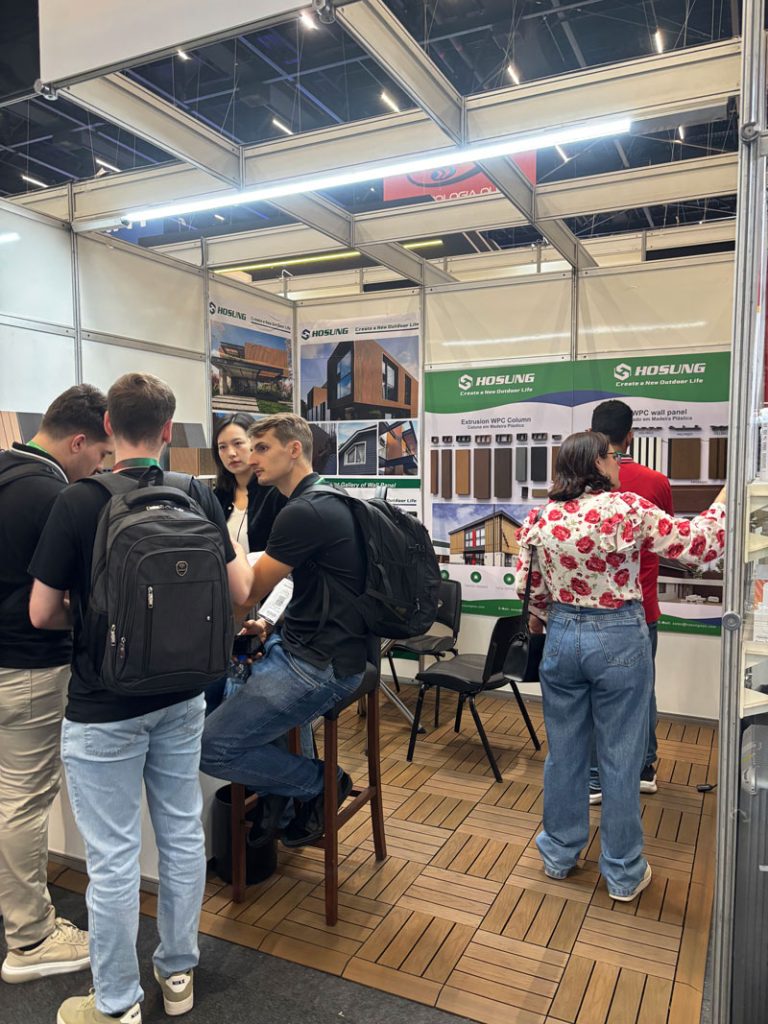
Weather and Climate Resistance
Moisture Protection
UltraShield’s 360-degree cap completely blocks water absorption. The core remains dry even during heavy rainfall or in coastal climates. This feature prevents swelling, mold, and decay, giving UltraShield Antique decking a distinct edge in humid or rainy environments.
Hosung’s embossed decking resists water well, but because it lacks a cap, it can absorb minimal moisture over years of exposure. However, Hosung’s proprietary formulation with low-porosity material ensures that any absorption does not compromise structural integrity.
Verdict: UltraShield Antique offers maximum waterproofing; Hosung provides reliable protection suitable for most climates.
UV and Temperature Stability
Both decking types are engineered to endure long-term sunlight exposure. UltraShield’s polymer cap includes fade-resistant pigments, keeping antique shades vibrant for decades. Hosung uses anti-UV additives that minimize fading and prevent the “greyout” effect common in older composites.
Regarding temperature, UltraShield’s surface stays relatively cool thanks to its light-reflective cap, whereas Hosung’s embossed boards, with their textured surface, disperse heat effectively underfoot.
Verdict: Both perform strongly—UltraShield leads slightly in fade resistance; Hosung excels in thermal comfort.
Installation Experience
Both decking types use hidden fastener systems, creating smooth, screw-free surfaces. Installation techniques are similar, but there are subtle differences worth noting:
UltraShield Antique decking requires careful handling to avoid damaging the protective cap during cutting or drilling. The boards are slightly heavier due to the co-extrusion layer.
Hosung 3D embossed decking is easier to work with because of its uniform composition. It can be trimmed and shaped without worrying about delamination.
In both cases, spacing and ventilation are critical to accommodate expansion and drainage.
Verdict: Hosung’s boards are simpler to cut and install, while UltraShield Antique decking demands more precision for best results.
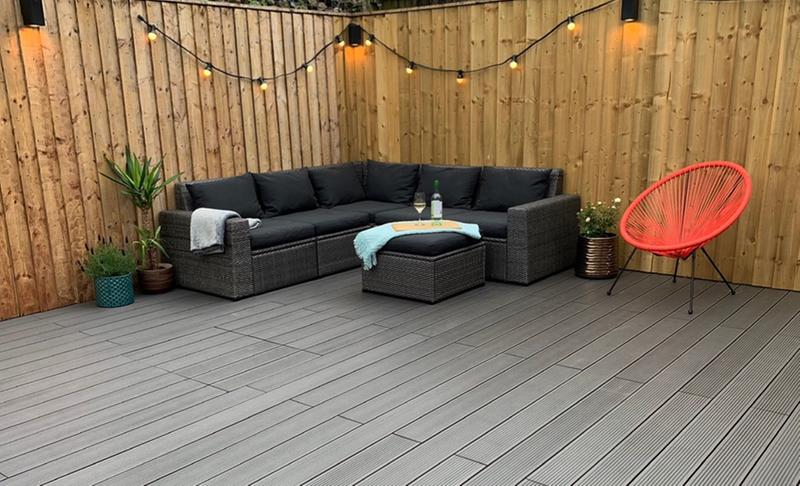
Maintenance and Cleaning
UltraShield Antique Composite Decking
Thanks to its capped surface, maintenance is minimal. The outer shell repels dust, grease, and mildew. A simple rinse with soap and water keeps the surface spotless. Even stubborn stains from barbecue spills or drinks rarely penetrate the cap.
Hosung 3D Embossed WPC Decking
Its deep grain texture may collect more dust or pollen, but routine cleaning with a soft brush or hose is usually enough. The matte surface hides smudges, so it rarely looks dirty even with minimal care.
Verdict: UltraShield Antique requires the least maintenance effort overall, but both are far easier to manage than real wood.

Sustainability and Eco-Friendliness
Both products score high on environmental responsibility.
UltraShield Antique Composite Decking is made from 95% recycled materials—recycled wood fibers and plastics—reducing landfill waste. Its long lifespan further minimizes resource consumption.
Hosung’s 3D embossed WPC decking is 100% recyclable and manufactured using sustainable energy processes. It contains no toxic adhesives or formaldehyde.
While both prioritize sustainability, Hosung’s focus on fully recyclable, low-emission production gives it an edge for eco-minded buyers.
Cost and Value Comparison
Initial Investment
UltraShield Antique Composite Decking is a premium product with higher upfront costs. The co-extrusion technology, aesthetic detailing, and extended warranty justify the price for homeowners seeking luxury and longevity.
Hosung’s 3D Embossed WPC Decking offers exceptional value. It delivers realistic wood aesthetics and strong performance at a more affordable price, making it ideal for large decks or budget-conscious projects.
Long-Term Value
While UltraShield requires less maintenance and lasts longer, Hosung’s durability ensures excellent performance for its price range. When factoring in aesthetics, lifespan, and upkeep, both options present solid long-term returns.
Verdict: UltraShield Antique is the long-term premium choice; Hosung provides the best balance between cost and quality.
Comfort and User Experience
UltraShield Antique Composite Decking has a smoother finish and feels refined underfoot. The capped surface resists splinters and remains comfortable even for barefoot walking. However, its surface can become slightly warmer under direct sunlight compared to embossed textures.
Hosung’s 3D embossed decking feels more natural and cooler due to its open grain texture. The embossed grooves allow airflow beneath your feet, enhancing comfort during hot summer days.
Verdict: Hosung’s decking is more temperature-friendly; UltraShield Antique feels smoother and more elegant.

Lifespan and Warranty
UltraShield Antique Composite Decking typically carries a 25-year residential warranty, covering fade, stain, and structural integrity. The polymer shell ensures consistent performance for decades.
Hosung’s 3D Embossed WPC Decking usually includes a 15–20-year warranty, which is impressive given its lower cost. The solid core design ensures stability and resistance against cracking or splitting.
Verdict: UltraShield Antique lasts longer, but Hosung’s lifespan is outstanding for its price segment.
Application Scenarios
UltraShield Antique Composite Decking
Perfect for luxury homes, rooftop terraces, modern patios, and poolside lounges. The antique color tones enhance sophisticated architecture and pair well with minimalist outdoor furniture or metallic railings.
3D Embossed WPC Decking (Hosung)
Ideal for natural settings, garden paths, pergolas, and traditional outdoor spaces. Its realistic texture harmonizes beautifully with stone, greenery, and wooden furniture.
Verdict: UltraShield Antique fits modern elegance; Hosung suits rustic or nature-inspired designs.
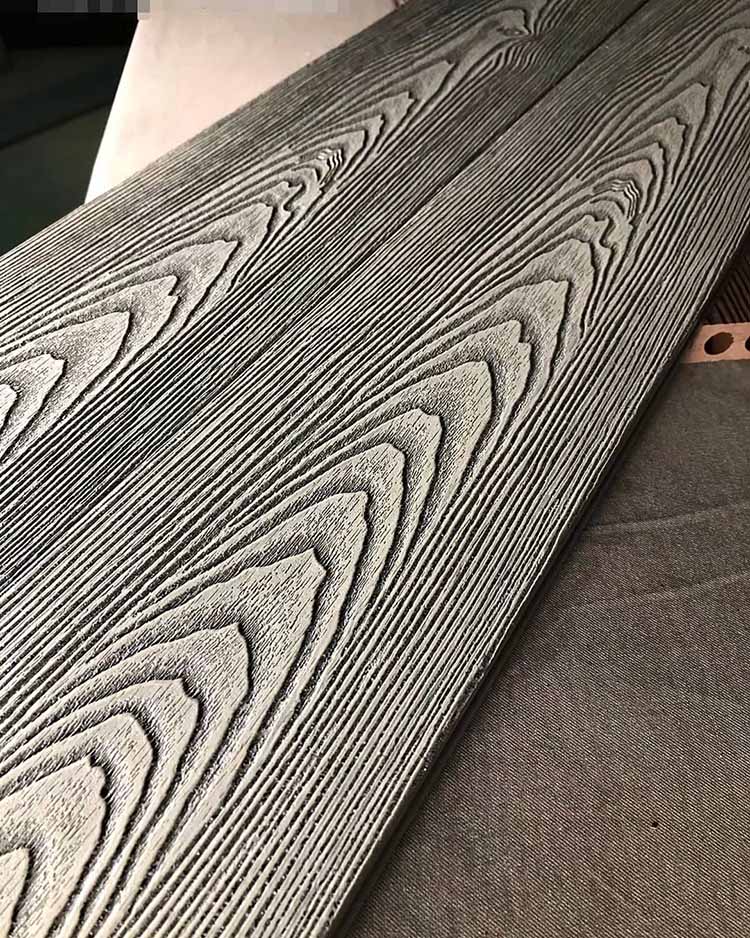
Summary Table
| Feature | UltraShield Antique Composite Decking | 3D Embossed WPC Decking (Hosung) |
|---|---|---|
| Core Structure | Capped composite (wood + HDPE + shell) | Solid composite (wood fiber + plastic) |
| Surface Texture | Smooth antique grain, multitone | Deep embossed, natural texture |
| Water Resistance | Excellent (fully capped) | Very good |
| Scratch & Stain Resistance | Superior | Good, hides scratches |
| Slip Resistance | Good | Excellent |
| Maintenance | Very low | Low |
| UV/Fade Resistance | Excellent | Good |
| Eco-Friendliness | 95% recycled materials | 100% recyclable |
| Price | Higher | More affordable |
| Lifespan | Up to 25 years | 15–20 years |
| Best Use | Modern luxury decks | Natural outdoor settings |
Final Verdict: Which One Should You Choose?
Both UltraShield Antique Composite Decking and 3D Embossed WPC Decking (Hosung) redefine outdoor living, offering the warmth of wood with the resilience of composites.
Choose UltraShield Antique Composite Decking if you desire premium elegance, deep antique colors, and minimal maintenance. It’s perfect for homeowners who value luxury finishes and long-term durability.
Choose 3D Embossed WPC Decking (Hosung) if you prioritize natural realism, strong grip, and cost efficiency. It offers the authentic charm of timber at a friendlier price point.
In the end, the decision depends on your aesthetic vision, budget, and lifestyle. Whether you prefer the sophisticated heritage of UltraShield Antique or the earthy warmth of Hosung’s 3D embossed decking, both promise lasting beauty, strength, and sustainability—key ingredients for a perfect outdoor space.

